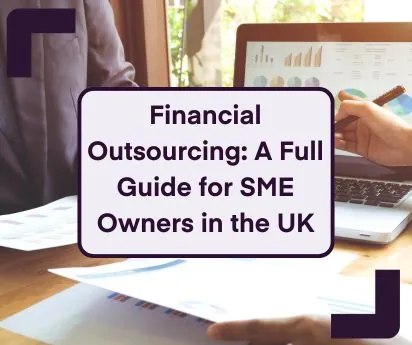
Pay Self-Assessment Tax: A How To Guide
4 Jun 2025If you’re self-employed or if you have income from a rental property, you’re in the largest group of around 12 million people who are liable to pay self-assessment income tax, and you need to be aware that midnight on 31st January 2026 is an important date for you. That’s when you need to have filed your annual tax return with HMRC and made the main payments for the year.
People who have been self-employed for some time will be familiar with the procedures. However, if you’re new to self-employment, it’s important to understand your filing and payment obligations. That way, you don’t incur fines from HMRC.
Checking your self-employment status
One of the first tasks is to confirm your status. When you work for just one firm and you’re paid a regular salary, then you’re treated as an employee. If that is the case firm should deduct income tax and National Insurance contributions at source under the PAYE scheme.
If you have left full-time employment and work for yourself (working on your own account), you could theoretically continue working for the same firm on a self-employed basis and receive payment without deduction of tax. However, HMRC would question whether you are genuinely self-employed and would apply a set of tests to confirm your status.
There is an Employment Status Indicator on the HMRC website, which you can use to find out if you are genuinely self-employed.
The tool asks a series of questions about your contract with a client, your role and responsibilities, how you are paid and any benefits you receive. Based on the answers you provide, HMRC will then decide your status for tax purposes.
The situation is simpler if you work for more than one client. In general terms, you will be treated as self-employed if you:
- Run your own small business with responsibility for its success or failure.
- You provide your own equipment for carrying out the work.
- You have to bid for work and submit invoices.
- You are free to work for more than one client.
Related: Who needs to complete a self assessment tax return?
Registering for self-assessment
If you are genuinely self-employed you must register with HMRC as soon as possible. But be aware of the dates for registration.
The tax year runs from 6th April to 5th April. If you became self-employed before 5th April 2025, you should have registered by 5th October 2025. If you haven’t already registered, you may be liable to a penalty.
However, if you become self-employed after 5th April 2025, you must register by 5th October 2026 at the latest, although you can register anytime before that date.
Once you’ve completed the questions, HMRC will create your account and you’ll receive a letter with your Unique Taxpayer Reference (UTR) number. You’ll then receive another letter with an activation code for your account. Once you’ve activated your account, you can file your tax return any time before the deadline.
Filing a tax return
When your self-employed business is up and running, you will have to file an annual self-assessment tax return. You can either complete a paper return or file online.
If you file a paper return, you must submit the form to HMRC by 31st October. The latest online filing date is 31st January.
If your situation is more complex and you have some earnings from employment where tax is deducted under PAYE and some from self-employment, you must file your online return by 30th December.
Whichever way you file, you must answer all the relevant questions accurately this includes:
- Providing information on your business.
- Your income and expenditure relating to the business.
- Income from other sources, such as interest, benefits or capital gains.
Using the information you provide on income and expenditure, the online form will calculate your profit from the business and tell you the amount of tax and National Insurance contributions you have to pay.
The income and expenditure figures you provide relate to your self-employed earnings during the tax year that ended on 5th April. So, by 31st January 2026, you must file figures that relate to your self-employed earnings in the period ending 5th April 2020.
If you started your business after 6th April 2025, your tax return will be due by 31st January 2027 and will include self-employed earnings between 6th April 2025 and 5th April 2026.
Working out your tax liability
When you start your self-employed business, you should establish your accounting period. Generally, this runs for 12 months from the day you begin trading. So, if you start your business on 1st January, your accounting period will end on 31st December.
You or your accountant records all your income during the accounting period and all the allowable expenditure incurred for the business. HMRC now allows you to record this information in two ways, cash basis and accrual basis.
If you are running a business, your accountant will handle all of your bookkeeping, and may also look after statutory accounts and/or management accounts, utilise online accounting as well as help with your cash flow and financial forecasting. Therefore when it comes to the end of the tax year, all your information is there and ready.
You can provide your actual receipts and expenditure during the accounting period – this is known as the cash basis. So, in the January-December example, if you invoice a client £100 on 10th December and received payment on 10th January you would not have to include that figure of £100 as income until the following year’s filing.
The traditional method, known as the accruals basis, means that you have to record money owed to you during your accounting period. So that December £100 invoice would be included in your income filing even though you had not received the money.
When you have all the information on income and expenditure, you can use that to calculate your profit from the business. There may be other items to factor into the calculation, such as allowances for capital expenditure, losses from earlier years or stock adjustments, but the basis of your tax liability is your profit from the business – the excess of income over expenditure.
Working out your payments
The payments you make are based on your profits not your income from your self-employment business. In this simplified example, assume you have made a profit of £26,000 from an income of £35,000.
Like any other taxpayer, you have a personal allowance – the amount you are allowed to earn before you pay any income tax. For the 2025/26 tax year, the personal allowance is £12,570. So, you would have to pay tax on just the balance of your profit - £13,430.
That figure of £13,430 would be taxed at the current rate, which is 20 percent (the basic rate) for taxable income between £12,571 and £50,270. Above £50,271 you would pay tax at the higher rate of 40 percent.
In addition to income tax, you may also have to pay two types of National Insurance contributions – Class 2 and Class 4.
Class 2 contributions apply if your profits are over £6,725 for the 2025/26 tax year. You will have to pay £3.45 a week or £179.40 for the year.
The additional Class 4 contributions are due if your profits are over £12,570 for the 2025/26 tax year. You will have to pay 8 percent of profits between £12,570 and £50,270, and 2 percent on profits above £50,270.
Making payments
Self-assessment tax payments are made by two main dates – 31st January and 31st July.
By 31st January, you must pay any tax due on the profits calculated in your return. In the example, you would have to pay tax on your profit of £13,430, together with any National Insurance contributions.
You also make a first payment on account for the tax bill due the following January – 31st January 2027. HMRC generally bases this on your current liability. So, you would pay 50 percent of the tax and National Insurance contributions due on £13,430. Followed by the remaining 50 percent by 31st July.
Those two payments on account are then deducted from the tax due on your profits in the January 2027 filing. So, if your profits increased by £2500, you would only have to pay tax on that figure of £2500 on 31st January, plus the first payment on account – which would be based on profits of £16,930.
Depending on your personal circumstances, you may be able to arrange to pay by instalments, rather than making single lump sum payments. Either way, it is important to pay by the deadlines or the install dates. If you don’t, you will have to pay interest on any late amount.
Need an accounting consultant for your tax return?
Self-assessment tax can be complex, particularly if you are new to self-employment. If you need professional advice or assistance with completing your tax return, we can help. We can help the self-employed as well as help with corporation tax returns.
Our friendly small business accountants and employment law solicitors can assist with any tax issues. Check out our latest tax advice, and contact us on 0333 344 0144 or enquires@accountsandlegal.co.uk. You can also contact us directly.





















